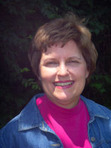Birth Order is a good source for characterization
Did you know that your early family relationships influence your current lifestyles? In writing, we always look for a character’s motivation, a core decision that sparks her reason for doing what she does. Birth order may play a big part in a person’s motivation and is worth taking a look at when creating a literary character.
When cleaning out an old file cabinet recently, I came across a newsletter called “Practical Ideas for Counselors” from 1981. The following statements are copied from the newsletter. The article claims they are based on theory proposed by Dr. Alfred Adler.
Human beings are “social” and from birth their basic desire is to find a place in the group to “belong.”
The family is the first group of human beings a child learns to deal with.
Therefore, in order to achieve “belonging” a child learns to interact with other family members in a way that will result in feelings of recognition or significance.
These interactions make the most significant contribution to a child’s personality and they can be either positive or negative.
The way a child feels about the interaction is more important than the interaction itself.
The way a child acts, feels, and thinks forms a “life-style.”
“Life-styles” are based on a child’s human interactions and are formed by age 7.
This means that when children enter school their way of dealing with human beings has been established according to the way they perceive their experiences within their family group.
The following is a summary of characteristics based upon birth order.
Oldest children tend to be:
Ambitious
Achievers
“Trailblazers” for the other children in the family
Conservative thinkers
Conforming, especially to their parents’ standards
Authoritative
Happy in power roles
Only children tend to be:
Loners
Reluctant to share
Better in establishing relationships with people either older or younger than themselves
Extremely responsible or very helpless
Stubborn when they do not get what they want
Middle children of a family of three tend to be:
Sensitive
Very aware of being left out
Verbal about what they believe to be unfair
More sociable than the oldest child
Overshadowed by the two other siblings or they become the strongest of the three in the competitive struggle
Second children of a family of more than three tend to be:
More risk taking and more flexible than the oldest child
Different in personality from the oldest child
More adaptable to change
Youngest children tend to be:
Babied and spoiled
Not taken seriously
Manipulators
The most powerful children in the family
Middle children of a large family tend to be:
More cooperative than competitive
Easy to get along with
So, when you begin to create your next character, think about her back story. Where does she fit in the family structure? Can you use any of the “characteristics” as the basis for her personality?



